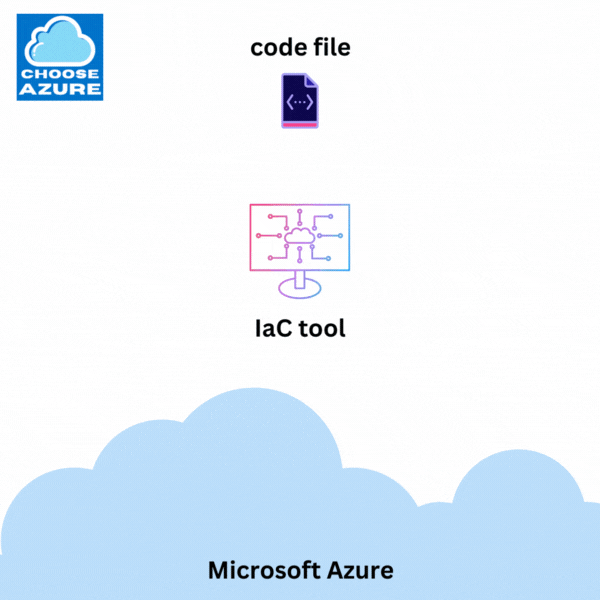Understanding the Basics of Infrastructure as Code
What is Infrastructure as Code?
Infrastructure as Code, or IaC, is the process of defining and provisioning cloud or on-prem infrastructure resources, like virtual machines, networks, databases, etc., using regular definition files and a declarative approach. A declarative approach means that you specify what you want to be accomplished, rather than how it should be done.
So, here’s an example of a declarative approach that’s similar to what you define in an actual IaC code file.
Create a virtual network named ‘vnet’.
Create 3 virtual machines, set a public IP address to each one, and put them inside the ‘vnet’ virtual network.
Install an NGINX server on each of the machines mentioned above.
The IaC tool interpreter then reads this file, checks it for mistakes, and, if it’s syntactically and logically correct, applies it to the destination infrastructure, whether that’s a cloud provider like Azure or AWS, or an on-prem solution. So, in this case, it will provision a virtual network with 3 virtual machines in it and an NGINX server on each of the VMs.
Of course, this is just pseudocode. A typical IaC tool has its own syntax and processes for accomplishing the tasks described above, but fundamentally the concept remains the same.
Here’s the whole process in a nutshell.

You have an IaC code file that describes what you want in a declarative manner, and a tool that interprets this file, checks it for mistakes, and then applies it to the destination infrastructure, in this case, Azure, by provisioning 3 VMs.
What are the benefits of using Infrastructure as Code?
The benefits of IaC are numerous, but the most significant ones include minimized chances of human error, version control, idempotency, automation, and speed. Let’s delve into each one.
No Human, No Error: Before the advent of IaC, infrastructure provisioning and configuration were manual processes, involving direct server interactions to install and configure software. This not only slowed down the process but was also highly prone to human error, especially when dealing with tens or hundreds of servers. IaC eliminates these risks by automating the process, ensuring consistency and accuracy.
Version Control: Just like your application code, your infrastructure code can be placed under version control. This allows you to track changes, understand modifications, revert to previous versions if necessary, and maintain a clear audit trail of who did what and when.
Idempotency: This principle ensures that no matter how many times you apply your infrastructure definition files, you’ll always achieve the same result. This consistency is crucial in managing complex systems and reduces the chances of discrepancies and drifts in your infrastructure.
Speed: IaC eliminates manual work, enabling you to provision entire systems and networks within minutes, not hours or days. This rapid deployment capability is invaluable in today’s fast-paced technological landscape.
Automation: This is the overarching benefit that ties all the above points together. Once your infrastructure code files are defined, tested, and version-controlled, there’s minimal manual intervention required. The IaC tool takes over, interpreting and implementing your infrastructure exactly as described in your files.
These benefits make Infrastructure as Code an essential practice for nearly every company that relies on resource provisioning and management, whether on-prem or in the cloud.
In our next insight, we’ll explore Terraform, one of the leading open-source tools for infrastructure as code. We’ll examine how it works and even provision a small environment on Azure with it. Looking forward to our next session! 🙂
If you found this insight helpful, please consider sharing it on social media and subscribing. Insights like this take considerable time to produce, and your support is greatly appreciated. 🙂




